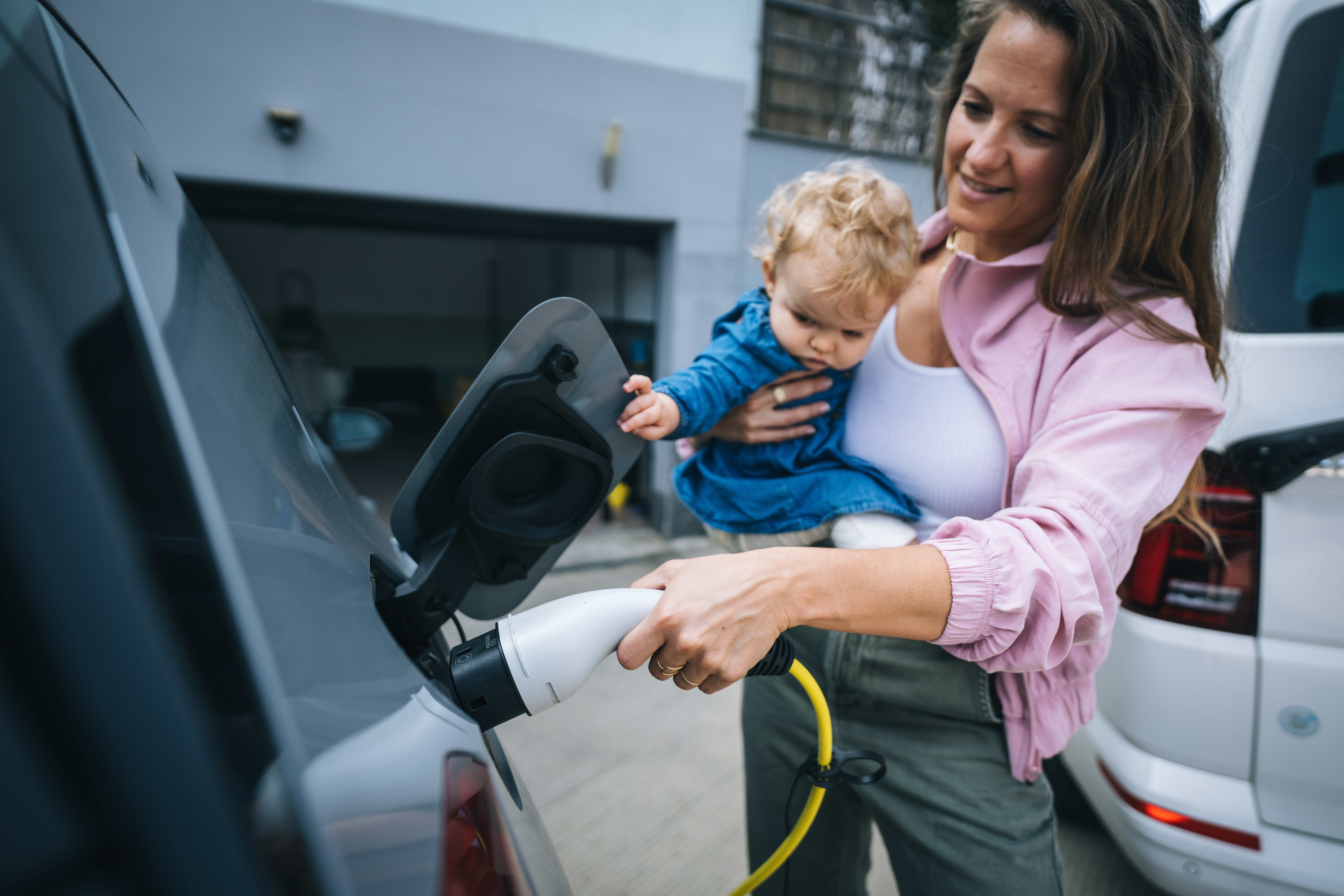Photo courtesy of Panasonic Eco Systems and Connected Technology
Electric vehicles, with their sleek exteriors, high-tech operating systems, and clean, quiet motors, are more popular than ever. However, the biggest advantage of driving an EV is charging your car at home and eliminating fuel costs.
According to a report from consulting firm Energy Innovation, the average cost to fuel a gas-powered car in the US is $1,904 annually, compared to $1,054 to charge an EV for a year. Driving an all-electric car wipes out your dependence on gas, while a plug-in hybrid electric will make you less susceptible to price volatility at the pump.
Most EV owners charge their cars at home, but, like gas, the price of electricity can also change from month to month, and even throughout the day as consumer demand rises and falls. If you’re charging your EV in the evening, when time-of-use electricity prices are at their highest, it will end up costing you more.
How can you avoid paying more than you need to? Installing a home battery system will keep your EV charging costs down by giving you control and flexibility over when and how to store and use electricity.
How home battery systems work
Home batteries store electricity, providing you with a backup power source to use whenever you need it. A home battery system can be charged either directly from the electric grid or from rooftop solar panels. If it's charged from the grid, you will be billed for the electricity at the current market rate, but if it's charged from your solar panels, the electricity is free.
However you choose to charge your home battery system, it will help you save money on electricity. For example, you can charge it from the grid during the day or at night when rates are lower and then use the stored power in the afternoon and evening when rates rise. And, when paired with solar panels, a home battery system can store solar energy during the day for free and discharge it later to avoid peak grid rates.
Home battery systems can lower your EV charging costs
Grid electricity rates tend to peak in the late afternoons and evenings, which is also when many homeowners want to charge their EVs. That’s especially true if you’re on a time-of-use (TOU) rate with your utility. A home battery system makes it easier to take advantage of lower electricity rates. You can charge your EV from the battery when you get home and then switch to grid electricity later in the evening, once grid prices fall.
When paired with solar, a home battery system can reduce your EV charging costs even more. Your solar panels will charge your battery during the day so you’re using clean, free solar energy when you charge your EV. That reduces your reliance on electricity from the grid — and your exposure to grid prices — even more.
The amount of charge a home battery system provides to an EV depends on the size of the EV’s battery and how long it takes to recharge. An average home battery system can store 10 to 15 kilowatt-hours (kWh) of electricity.
Panasonic's EVERVOLT home battery system is slightly higher at 17.1 kWh. Most EVs can store between 25 and 100 kWh on a “full tank”. While a home battery system won't be able to fully charge a large EV battery, it can easily keep it topped up. And when paired with solar, your home battery system can continually recharge during the day — for free.
More ways to save money on EV charging at home
Home battery systems make it easier to optimize how you’re using electricity from the grid, which means you can avoid paying peak prices for energy from the grid. But using a home battery system is just one way to save money on charging your EV at home.
Smart charging
A smart charger keeps track of electricity prices and automatically starts and stops charging your EV as prices fluctuate, removing the headache of having to manually keep tabs on energy prices. You can also optimize charging based on other criteria, such as charging the battery to a specific percentage, and what time you want your EV to finish charging.
Check for incentives from your utility
Some utility companies offer special electricity rates for EV owners, such as lower prices for charging during off-peak hours, or per-kWh discounts. Check with your utility to see whether it offers any EV-specific rates or discounts.
Avoid fully charging your EV
The first and last parts of an EV battery take the longest to charge. Instead of charging your EV to 100%, stop charging it at about 80% and don’t let it fall below 20%. This will not only help to keep your battery in good condition for longer, it will also cost you less.
When it comes to charging your EV at home, a home battery system gives you flexibility and energy cost savings. If you want to take advantage of all the ways to save money on electricity, talk with a Panasonic expert to help find the right home battery system for you.




